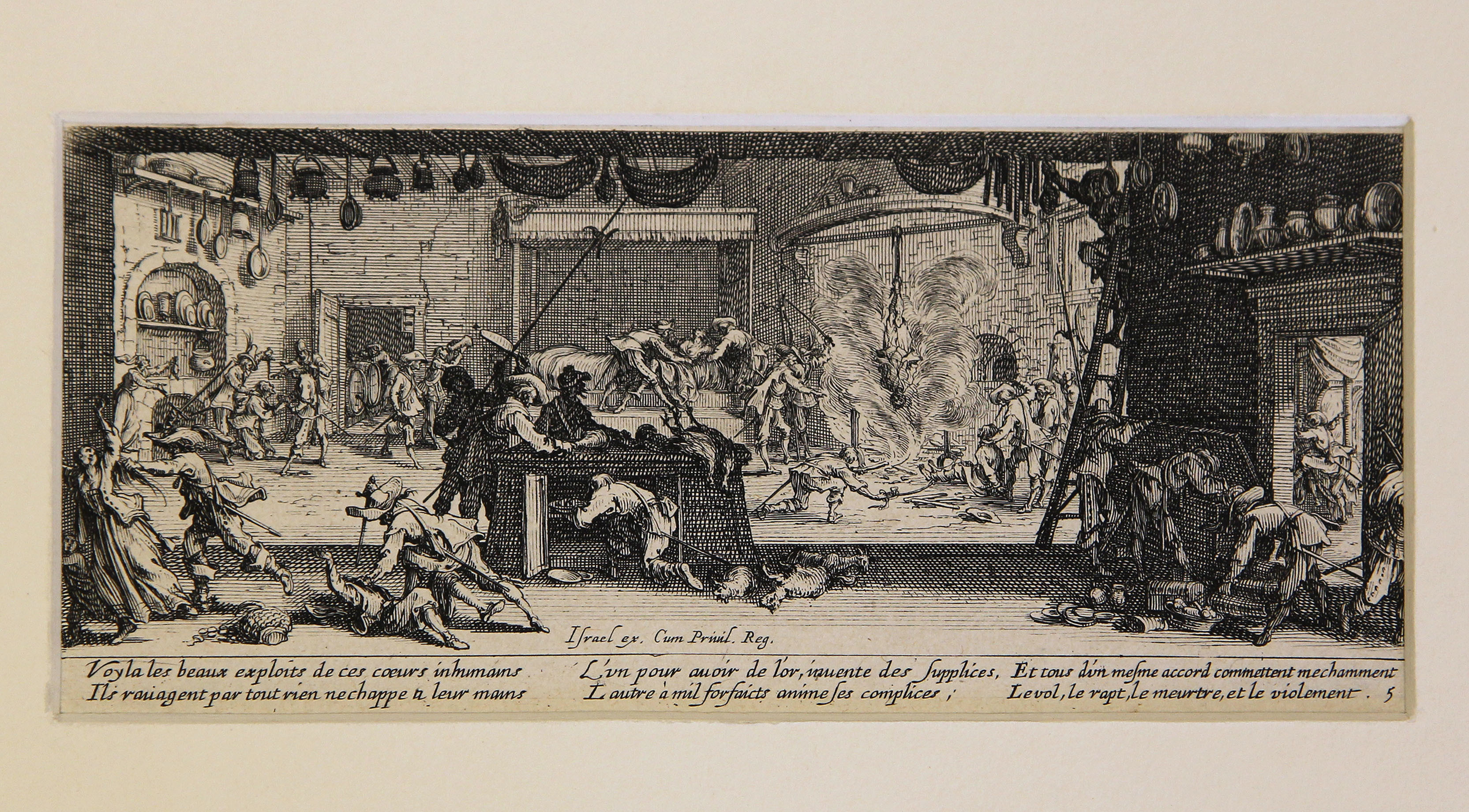Politics and Propaganda : Le Pillage
Les Grandes Miseres is an 18 part series of prints showing several scenes of war's devestation. Most of the plates feature soldiers abusing civilians, and their consequent punishments for these injustices. The fifth plate in the series shows Le Pillage in which soldiers torment civilians by looting, raping and killing.
Upon returning to Nancy from over a decade spent in Rome and Florence, Callot was disheartened to see the state that the war had had on his native Lorraine. Within the year of his return, a Count Mansfield in the name of King Louis XIII had lead his men to devastate Lorraine for five days during which they killed anyone they encountered, raped, damaged and stole mercilessly despite the fact that they were amply provisioned.
There are no specific historical events described, nor nationalistic symbols, or flags to denote a preference. Despite the lack of specific symbolism, The Large Miseries may not just be a protest or documentation of war, but a more specific and covert protest in the name of civilians directed towards King Louis XIII, a leader whose actions Callot openly disagreed with.
In his article "A Bequest of Prints by Callot and Daumier," art historian A. Hyatt Mayor asserts that, ‘In the age of autocrats the realist Callot, knowing that he could do nothing to alter events, observed..with the detached, astute, and witty eye of the courtier.' It is clear that this educated, talented and cultured artist was not indifferent to the political upheaval surrounding him. Rather shrewdly, he may have infused this piece of anti-war propoganda with a spirit of protest from the people to their autocrat, in a series that even King Louis XIII himself may have enjoyed.

